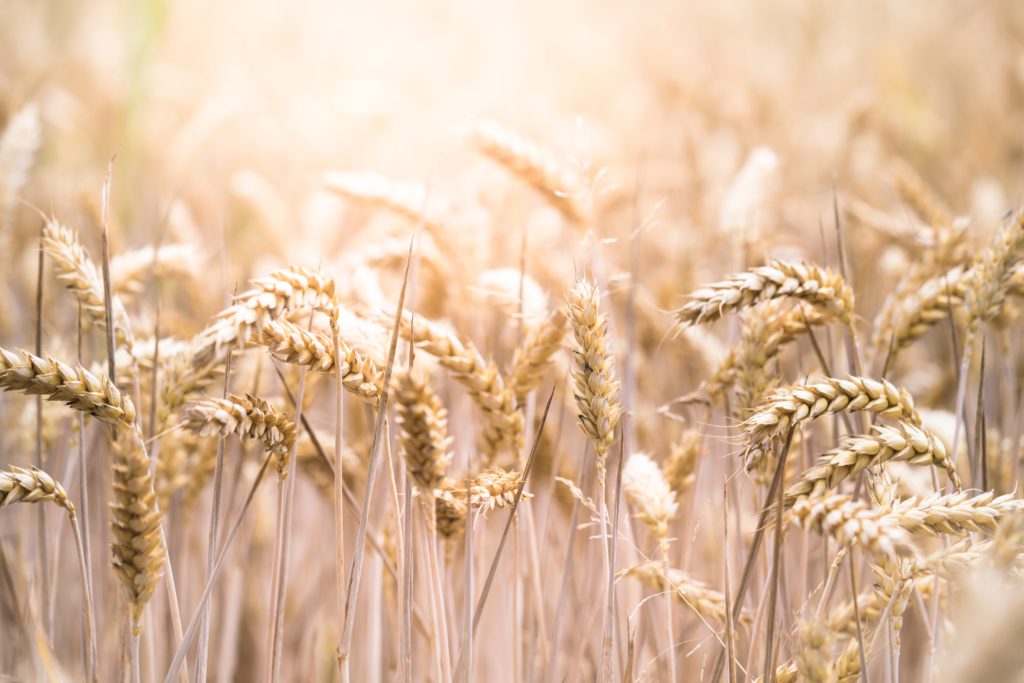
It’s time to get hip with fiber. Yes, you read that right! Fiber is not just for your parents or grandparents. In fact, fiber is an essential ingredient for maintaining a healthy diet and we all need it.
Dietary fiber is most commonly thought of as a nutrient to “increase regularity,” but it actually has other attributes, most notably helping one maintain a healthy weight 1 and also helping lower risk of heart disease.2 Yet, national surveys indicate that only around 5% of our population in the US is meeting their recommended daily intake of fiber. In fact, our under-consumption of fiber has been considered a public health concern.3
So, why are so many people unaware that their diet is lacking in this key nutrient? And how can we help right the ship? We think education is the first step and to help with that, we are breaking down everything there is to know about fiber!
WHAT IS FIBER?
Dietary fiber has often been defined as the part of plant foods that were unable to be broken down by human digestive enzymes and be absorbed. Unlike other food components like protein, fats and carbohydrates that can be broken down for nutritive value, fiber passes through the digestive system and out of the body.4
Fiber can also be classified between two types, broken down below. In general, most foods that contain fiber have a little bit of both, but quantities vary depending on the source. 5
- Soluble Fiber:
- When soluble fiber is dissolved, it forms a gel-like substance in your stomach.
- Soluble fiber provides a feeling of satiety or fullness.
- Several sources of soluble fiber include barley, psyllium, carrots, oats, peas, beans and apples.
- Insoluble Fiber
- Increases stool bulk and promotes its movement through your digestive system.
- Helps reduce the symptoms of constipation or irregular bowel movements.
- Great sources of insoluble fiber include wheat bran, nuts, whole wheat flour, cauliflower and green beans.
HOW MUCH DIETARY FIBER SHOULD I HAVE EACH DAY?
The USDA suggests that men under the age of 50 consume 38 grams per day and women in the same age bracket consume 25 grams of fiber per day. For those 51 and older, the recommended fiber intake is 30 grams per day for men and 21 grams per day for women.6
WHAT ARE THE HEALTH BENEFITS OF DIETARY FIBER?
Supports digestive health. Diets high in fiber help promote intestinal regularity. Fiber has the unique ability to increase the weight and size of your stool while softening it. This also helps decrease your chance of constipation.7
Aids in weight management. Nutrient dense foods that contain fiber increase the feeling of satiety. Remember, soluble fiber forms a gel-like substance in your gut that keeps you feeling full which means you are less likely to consume extra calories. Additionally, high fiber foods tend to have less overall calories, compared to more energy dense foods.7
Lowers your risk for cardiovascular disease and diabetes. Studies indicate that diets high in fiber can help to reduce the risk of developing cardiovascular disease and diabetes. Soluble fiber may help lower total blood cholesterol by lowering low-density lipoprotein cholesterol (LfDL-C or “bad” cholesterol). Soluble fiber has the added benefit of slowing the absorption of sugar, which in turn can help improve blood sugar levels. 8
WHAT ARE GOOD SOURCES OF DIETARY FIBER?
The easiest way to reach your fiber goal is to know how much is in the foods you regularly consume. Here are some great options to reach for next time your grocery shopping:
- Fruits
- Vegetables
- Beans, peas, and other legumes
- Nuts and seeds
- Whole grain products
Overall, just remember that non-processed food sources tend to have higher fiber content than refined or processed foods.9
While it should never be a replacement for seeking out high-fiber, healthy foods, adding a fiber supplement – such as AdvoCare® Fiber – to your routine can also be a great a convenient way to help reach your daily recommended intake.
WHAT ARE SOME EASY WAYS TO START EATING MORE FIBER?
Here are a few quick tips to help get you started on eating more fiber:
- Start your day with a high fiber breakfast, such as whole grain oatmeal.
- Choose foods with a higher percent Daily Value of dietary fiber.
- Add beans, lentils, or peas to salads and soups, or as a side dish to a main entrée.
- Look for whole grains on the ingredient list on food packages.
- Switch from refined to whole grain versions of commonly consumed foods, such as whole grain bread vs. white bread.
- Incorporate fruit with salads and/or enjoy as a snack or dessert.
- Stay stocked up on raw vegetables such as carrots, bell peppers, celery, cherry tomatoes or cauliflower, for times when you need a quick snack.
Sources
1 Ferrari, N. (2015, February 18). Making one change – getting more fiber – can help with weight loss. Harvard Health. Retrieved April 26, 2022, from https://www.health.harvard.edu/blog/making-one-change-getting-fiber-can-help-weight-loss-201502177721#:~:text=A%20study%20published%20in%20today’s,as%20a%20more%20complicated%20diet.
2 McRae M. P. (2017). Dietary Fiber Is Beneficial for the Prevention of Cardiovascular Disease: An Umbrella Review of Meta-analyses. Journal of chiropractic medicine, 16(4), 289–299. https://doi.org/10.1016/j.jcm.2017.05.005
3 Quagliani, D., & Felt-Gunderson, P. (2016). Closing America’s Fiber Intake Gap: Communication Strategies From a Food and Fiber Summit. American journal of lifestyle medicine, 11(1), 80–85. https://doi.org/10.1177/1559827615588079
4 Fiber. The Nutrition Source. (2015, April 21). Retrieved April 26, 2022, from https://www.hsph.harvard.edu/nutritionsource/carbohydrates/fiber/#:~:text=Fiber%20is%20a%20type%20of,and%20blood%20sugar%20in%20check.
5 Norris, T. (2018, March 1). Soluble vs. insoluble fiber: What’s the difference? Healthline. Retrieved April 26, 2022, from https://www.healthline.com/health/soluble-vs-insoluble-fiber#recommendations
6 McManus, K. D. (2019, February 27). Should I be eating more fiber? Harvard Health. Retrieved April 26, 2022, from https://www.health.harvard.edu/blog/should-i-be-eating-more-fiber-2019022115927
7 Mayo Foundation for Medical Education and Research. (2021, January 6). How to add more fiber to your diet. Mayo Clinic. Retrieved April 26, 2022, from https://www.mayoclinic.org/healthy-lifestyle/nutrition-and-healthy-eating/in-depth/fiber/art-20043983#:~:text=Dietary%20fiber%20increases%20the%20weight,Helps%20maintain%20bowel%20health.
8 Threapleton DE, Greenwood DC, Evans CE, et al. Dietary fibre intake and risk of cardiovascular disease: systematic review and meta-analysis. BMJ. 2013;347:f6879. Retrieved April 26, 2022, from: https://www.bmj.com/content/347/bmj.f6879.full
9 Shaw, G. (n.d.). The ultimate high-fiber grocery list. WebMD. Retrieved April 26, 2022, from https://www.webmd.com/cholesterol-management/features/fiber-groceries





